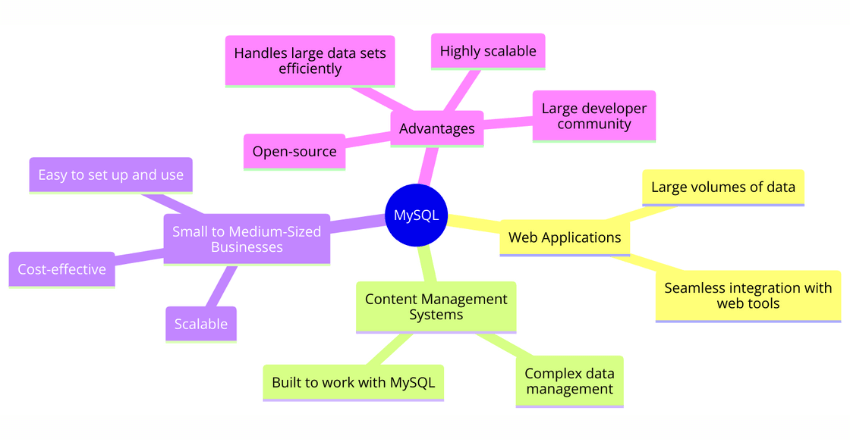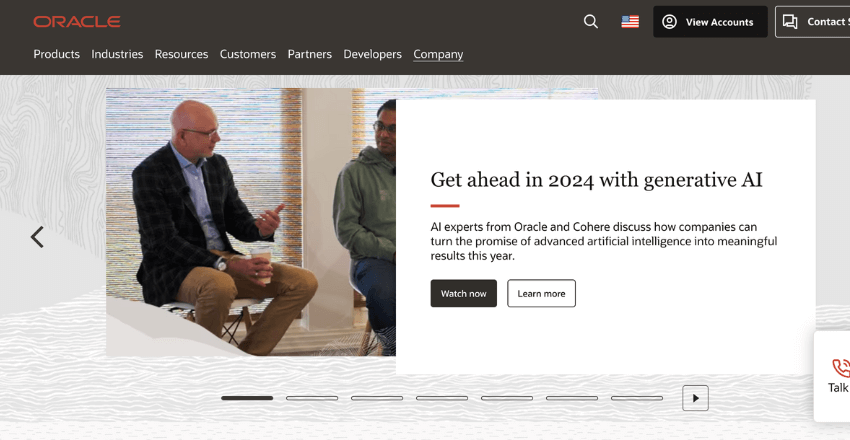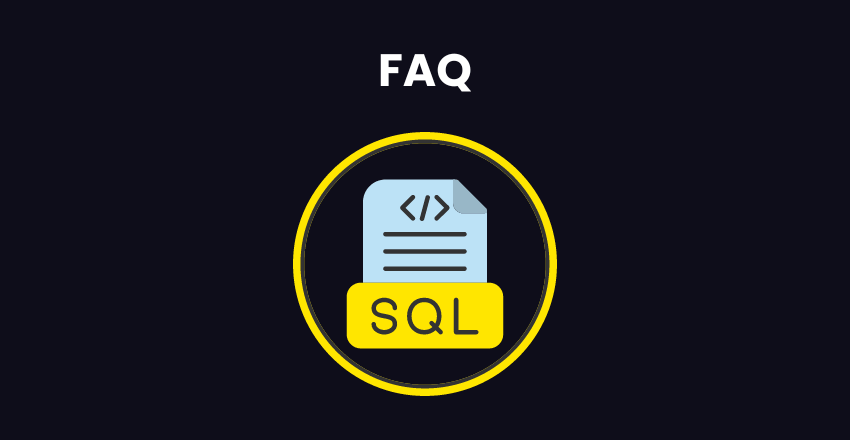
When to Use MySQL, it’s essential for web developers seeking an efficient, open-source database solution for dynamic website content.
As a business, selecting the right database option is crucial for efficient data management. With the various database options available, it can be overwhelming to choose the one that fits your specific requirements.
Database Options
As businesses accumulate data, it’s essential to implement a database solution that can efficiently manage and store that data. With numerous database options available in the market, selecting the right one can be a challenging task. However, choosing the right database can significantly impact your business’s performance.
Database solutions offer a range of features and capabilities, including scalability, flexibility, security, performance, and cost-effectiveness. Knowing which database option is suitable for your business can save you time and resources.
Understanding MySQL
MySQL is a widely used open-source relational database management system (RDBMS). It is known for its high performance, scalability, and ease of use. MySQL is used by businesses of all sizes to store, manage, and retrieve data efficiently.
MySQL is a server-based system, which means it requires a server to run on. It supports multiple users and allows administrators to control user access and permissions. MySQL can be used on various operating systems and integrates with different programming languages.
MySQL stores data in tables that consist of rows and columns. Tables can be related to each other using foreign keys, creating a relational database. MySQL supports a wide range of data types, including integers, strings, dates, and times.
MySQL also supports various storage engines, which are responsible for managing data and indexes. The most common storage engine used with MySQL is InnoDB, which provides support for transactions and foreign keys.
MySQL has some limitations, such as its ability to handle large amounts of data. However, its scalability, ease of use, and wide community support make it an ideal choice for small to medium-sized businesses, content management systems, and web applications.
Strengths of MySQL
MySQL has several strengths that make it a popular choice for businesses. Some of these include:
- Scalability: MySQL is highly scalable, which allows it to handle large amounts of data efficiently. It can also be used in a clustered environment for even greater scalability.
- Performance: MySQL is known for its high performance. It can handle a large number of concurrent users and transactions, making it ideal for web applications.
- Ease of use: MySQL is easy to use and configure. It has a simple and intuitive interface that allows administrators to manage users, permissions, and data easily.
- Community support: MySQL has a wide community of users and developers who provide support and resources for free. This community support makes it easy to find solutions to common problems and stay up to date with the latest developments in the software.
Overall, MySQL is a reliable and effective database solution that can meet the data management needs of many businesses. Understanding its features, strengths, and limitations is important to make an informed decision when choosing a database.
If you are interested in learning more about MySQL or need help with database management, HireSQL offers dedicated SQL developers who can provide expert support and solutions for your business.
Here is an example of using MySQL to create a table:
| Column Name | Data Type |
|---|---|
| id | INT(11) NOT NULL AUTO_INCREMENT PRIMARY KEY |
| first_name | VARCHAR(50) NOT NULL |
| last_name | VARCHAR(50) NOT NULL |
| VARCHAR(100) NOT NULL |
This creates a table with four columns: id, first_name, last_name, and email. The id column is the primary key and auto-increments with each new record. The other columns are required to have a value.
When to Choose MySQL

MySQL is a popular database option with a variety of use cases. It is especially effective for web applications, content management systems, and small to medium-sized businesses.
One of the main advantages of MySQL is its ability to handle large amounts of data efficiently, making it an excellent choice for businesses that need to store and manage large data sets.
MySQL is also highly scalable, allowing businesses to easily upgrade their database as their needs grow. It is an open-source platform, which means it is free to use and has a large community of developers constantly improving and updating the software.
Web Applications
If you are building a web application, MySQL is an excellent choice. Its ability to handle large volumes of data makes it ideal for applications that need to store and retrieve large amounts of information quickly. MySQL also works seamlessly with other web development tools, making it easy to integrate into your web application.
Content Management Systems
MySQL is also a popular choice for content management systems (CMS). CMS platforms often require complex data management capabilities, and MySQL’s robust features are well-suited to these needs. Additionally, many CMS platforms are built to work specifically with MySQL, making integration seamless.
Small to Medium-Sized Businesses
MySQL’s scalability and cost-effectiveness make it an excellent choice for small to medium-sized businesses that need a reliable and efficient database solution. It is easy to set up and use, making it a great choice for businesses that may not have the resources to hire a full-time database administrator.
Overall, MySQL is an excellent choice for businesses that need a scalable, reliable, and cost-effective database solution. Its versatility and wide variety of applications make it a popular choice for businesses of all sizes.
MySQL Code Example
Here’s an example query that returns the top 10 customers by order amount:
| Customer Name | Total Orders | Total Amount |
|---|---|---|
| Acme Corporation | 100 | 50000.00 |
| XYZ Corporation | 80 | 40000.00 |
| 123 Corporation | 75 | 35000.00 |
This query retrieves the data for the above table:
SELECT customer_name, COUNT(order_id) AS total_orders, SUM(order_amount)
AS total_amount
FROM orders
GROUP BY customer_name
ORDER BY total_amount DESC
LIMIT 10;
{% endif %}Advantages of MySQL
MySQL is a popular and widely-used database option for many businesses. Its advantages include:
| Advantage | Description |
|---|---|
| Scalability | MySQL is highly scalable, making it a suitable choice for small to large businesses. It can handle high volumes of data without affecting performance. |
| Performance | MySQL is known for its speed and performance. It has a fast processing speed and can handle complex queries efficiently. |
| Ease of use | MySQL is easy to install, configure and use. It has a wide range of tools and resources that simplify database management tasks. |
| Community support | MySQL has a large and active community of developers and users. This community provides support, resources, and updates to improve the reliability and performance of MySQL. |
These advantages make MySQL a reliable and practical choice for businesses seeking an efficient database solution. Additionally, MySQL is an open-source software, which means that it is free to use and customizable to suit specific business needs.
With these advantages, it’s no surprise that MySQL is one of the most popular database solutions used by businesses worldwide.
Getting Started with MySQL
MySQL is one of the most popular open-source relational database management systems and is used by businesses of all sizes for efficient data management. If you are new to MySQL, here are a few steps to help you get started:
Getting started with MySQL involves several key steps, from installation to creating your first database. Here is a step-by-step guide to help you begin your journey with MySQL:
1. Download and Install MySQL
- Visit the official MySQL website: Go to MySQL Downloads to find the MySQL Community Server.
- Choose the right version: Select the version appropriate for your operating system (Windows, macOS, Linux).
- Install MySQL: Follow the installation wizard’s instructions. On Windows, you can use the MySQL Installer; on macOS and Linux, you might use package managers or .tar files.
2. Install a Database Management Tool (Optional)
- While not strictly necessary, a tool like MySQL Workbench or phpMyAdmin can simplify database management.
- Download and install MySQL Workbench: Visit the MySQL Workbench download page for a user-friendly GUI tool.
3. Start the MySQL Server
- Windows: Open the MySQL Command Line Client from the Start Menu or use the Services app to start the MySQL service.
- macOS/Linux: Open a terminal and start MySQL with the command
sudo service mysql startorsudo /etc/init.d/mysql start, depending on your system.
4. Secure MySQL Installation
- Run the
mysql_secure_installationcommand from your terminal or command prompt. This script helps you improve the security of your MySQL server. - You will be prompted to set a root password, remove anonymous user accounts, disable root logins remotely, and remove the test database.
5. Access MySQL
- Open the MySQL CLI: Type
mysql -u root -pin your command line or terminal, and enter the root password you set during the secure installation. - Using MySQL Workbench: Open MySQL Workbench and connect to your MySQL server using the root account or another user account.
6. Create a New Database
- Via CLI: Type
CREATE DATABASE mydatabase;to create a new database namedmydatabase. - Via MySQL Workbench: Use the graphical interface to create a new database by navigating through the menus.
7. Create a New User (Optional)
- It’s a good practice to create a new user for managing databases instead of using the root account.
- Via CLI: Execute
CREATE USER 'newuser'@'localhost' IDENTIFIED BY 'password';. - Grant privileges with
GRANT ALL PRIVILEGES ON mydatabase.* TO 'newuser'@'localhost';. - Apply the changes with
FLUSH PRIVILEGES;.
8. Create Your First Table
- Switch to your database with
USE mydatabase;. - Create a table using:
CREATE TABLE mytable (id INT AUTO_INCREMENT PRIMARY KEY, name VARCHAR(100), age INT);.
9. Insert Data into Your Table
- Insert a record with
INSERT INTO mytable (name, age) VALUES ('John Doe', 30);.
10. Query Your Data
- Retrieve data with
SELECT * FROM mytable;to see the inserted records.
11. Explore Further
- Explore more about MySQL’s features, such as creating indexes for performance, setting up foreign keys for data integrity, and learning about different storage engines.
Alternatives to MySQL
While MySQL is an excellent choice for most businesses, it’s not always the perfect fit. Fortunately, there are some great MySQL alternatives on the market. Let’s take a closer look at some of them:
1. PostgreSQL

PostgreSQL is an open-source object-relational database management system with an emphasis on extensibility and standards-compliance. It’s known for its robustness, flexibility, and high-level of data integrity. PostgreSQL supports a wide range of programming languages, including Python, Perl, Java, and C++, making it an excellent choice for complex projects.
2. Oracle

Oracle is a commercial relational database management system that’s been around for decades. It’s known for its scalability, reliability, and comprehensive feature set. Oracle is a great choice for large-scale enterprise applications that require high levels of reliability and security.
3. MongoDB

MongoDB is a NoSQL document-oriented database that’s designed for scalability, performance, and ease of development. It’s known for its flexibility and ability to handle unstructured data. MongoDB is a great choice for complex data models where the data structure is subject to frequent changes.
These are just a few examples of MySQL alternatives. Before making a final decision, it’s important to evaluate your specific needs and requirements. Consider factors such as scalability, performance, reliability, cost, and community support.
Best Practices for Using MySQL
If you have decided to use MySQL for your database needs, there are certain best practices to follow that will ensure optimal performance and security. Here are some tips to keep in mind:
- Plan your database design carefully: Before building your database, it’s crucial to plan out its design carefully. This means deciding on the tables, fields, and relationships between them. A well-organized database will make it easier to manage and query your data.
- Use indexes: Indexes allow you to search your data more quickly and efficiently. Be sure to add indexes to the fields you will be searching frequently.
- Optimize queries: Poorly written queries can slow down your database’s performance. Make sure to optimize your queries by using the appropriate commands and syntax.
- Secure your database: Keep your database secure by setting strong passwords and limiting access to authorized personnel only. Avoid using the root user account for everyday activities.
- Back up your data: Regularly backing up your database ensures that you can recover your data in case of any issues or disasters.
Following these best practices will help you get the most out of your MySQL database and ensure that your data is secure and easily accessible.
SQL Code Example: Creating a Table in MySQL
Here is an example of how to create a table in MySQL:
| Field | Type | Null | Key | Default | Extra |
|---|---|---|---|---|---|
| id | int | NO | PRIMARY | NULL | AUTO_INCREMENT |
| name | varchar(50) | NO | NULL | ||
| varchar(50) | NO | NULL | |||
| age | int | NO | NULL |
In this example, we create a table with four fields: id, name, email, and age. The id field is set as the primary key and set to automatically increment with each new record. The name, email, and age fields are set as varchar and int types, respectively, and are set to disallow null values.
Hiring Dedicated SQL Developers
Managing your database requires expertise and attention to detail. Hiring dedicated SQL developers can be the solution you need to stay ahead of the competition and ensure effective database management.
Outsourcing SQL development provides access to a pool of experienced professionals with deep knowledge of MySQL and other database options. At HireSQL, we provide dedicated SQL developers who are highly skilled in various aspects of SQL development.
Our developers have experience in developing, maintaining and optimizing databases using MySQL. They can take care of everything from database design and implementation to optimizing queries and ensuring data security. By hiring dedicated SQL developers from HireSQL, you can free up resources and focus on your core business activities.
Our dedicated SQL developers are highly proficient in English, ensuring clear communication and efficient collaboration. They work remotely, which means you can reduce costs associated with maintaining an in-house development team without compromising quality.
If you’re looking for a reliable outsourcing partner for your SQL development needs, HireSQL is your best bet.
Our developers are available on a full-time or part-time basis, depending on your specific requirements. Get in touch with us today to learn more about how we can help you maximize the potential of MySQL for your business.
Final Thoughts

Selecting the right database solution is crucial for efficient data management. After exploring various options, it’s evident that MySQL is a powerful and reliable choice for businesses. MySQL excels in web applications, content management systems, and small to medium-sized businesses. Its scalability, performance, and ease of use make it a preferred choice among developers.
When choosing a database, it’s important to consider factors like performance, scalability, security, cost, and community support. Best practices for utilizing MySQL effectively involve database design, optimization, security, and maintenance.
Hiring dedicated SQL developers can save time, ensure expertise, and provide cost-effective solutions. HireSQL is a reliable outsourcing company offering dedicated SQL developers for your MySQL database needs.
Overall, MySQL is a versatile and effective database option that businesses should explore further for their data management requirements.
External Resources
FAQ

1. When should I use MySQL for testing environments?
FAQ: When is MySQL the right choice for setting up a testing environment for web applications?
Answer: MySQL is ideal for testing environments where you need a reliable, consistent data storage solution that closely mirrors the production environment. It’s particularly suitable for applications that require structured data storage, complex transactions, and strong ACID (Atomicity, Consistency, Isolation, Durability) compliance. MySQL’s widespread use and extensive documentation also make it easy to integrate and troubleshoot in a QA setting.
Code Sample: Setting up a test database
-- Connect to MySQL
mysql -u username -p
-- Create a test database
CREATE DATABASE testdb;
-- Use the test database
USE testdb;
-- Create a table for testing
CREATE TABLE users (
id INT AUTO_INCREMENT PRIMARY KEY,
username VARCHAR(255) NOT NULL,
email VARCHAR(255),
created_at TIMESTAMP DEFAULT CURRENT_TIMESTAMP
);
-- Insert test data
INSERT INTO users (username, email) VALUES ('testuser', 'test@example.com');Explanation: This example demonstrates creating a simple test database and table, then inserting a test record. It’s a common scenario in QA testing environments to validate application interactions with the database.
2. How does MySQL support performance testing for high-traffic applications?
FAQ: For high-traffic applications, how can MySQL facilitate effective performance testing?
Answer: MySQL is well-suited for performance testing of high-traffic applications due to its robust scalability options, efficient indexing, and query optimization features. It supports a variety of storage engines, like InnoDB, that are optimized for high concurrency and performance under load. QA experts can use MySQL’s performance schema and explain plans to analyze query performance and bottlenecks.
Code Sample: Analyzing query performance
-- Enable the Performance Schema
SET global performance_schema = ON;
-- Use EXPLAIN to analyze a query
EXPLAIN SELECT * FROM users WHERE email = 'test@example.com';Explanation: The EXPLAIN statement provides details about how MySQL executes a query, including which indexes are used. This is invaluable for identifying inefficiencies and optimizing SQL queries for better performance in high-traffic scenarios.
3. When is MySQL recommended for data integrity testing?
FAQ: Why is MySQL recommended for projects where data integrity is critical?
Answer: MySQL’s support for foreign keys, transactions, and table constraints makes it a strong candidate for projects requiring rigorous data integrity testing. Its transactional storage engine, InnoDB, ensures that the database remains in a consistent state, even in the event of power failures or crashes. This is crucial for applications where the accuracy and reliability of data are paramount.
Code Sample: Ensuring data integrity with transactions
-- Start a transaction
START TRANSACTION;
-- Insert data into two related tables
INSERT INTO orders (order_id, order_date) VALUES (1, '2024-02-17');
INSERT INTO order_details (order_id, product_id, quantity) VALUES (1, 101, 2);
-- Commit the transaction
COMMIT;Explanation: This code sample demonstrates using transactions to ensure that changes to multiple tables are treated as a single atomic operation. If any part of the transaction fails, the entire operation can be rolled back to maintain data integrity. This feature is essential for testing complex systems where data consistency is critical.







